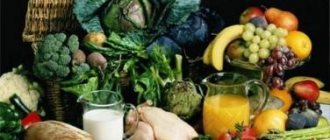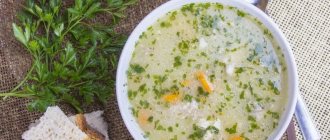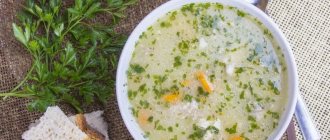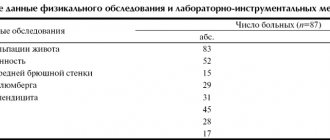Zeposia (ozanimod) is a new drug intended for the treatment of moderate-to-severe active ulcerative colitis in adults.
Regulatory approval was issued by the US Food and Drug Administration (FDA).
A verdict from the European Medicines Agency (EMA) is expected in the second half of 2022.
Zeposia debuted in March 2020 for the treatment of adult patients with relapsing forms of multiple sclerosis, including clinically isolated syndrome (CIS), relapsing-remitting multiple sclerosis (RRMS), and active secondary progressive multiple sclerosis (SPMS).
Zeposia is promoted by Bristol-Myers Squibb, which acquired the drug as part of its acquisition of Celgene.
Ozanimod continues to undergo final clinical evaluation of its suitability for the treatment of Crohn's disease.
Why are new drugs needed for ulcerative colitis?
Ulcerative colitis is a chronic disease with a progressive and disabling course. Dysregulation of the immune response in genetically susceptible individuals is considered a key component in the development and progression of inflammatory bowel disease. This has led to the development of therapies targeting immune abnormalities. The first such drugs were tumor necrosis factor (TNF) blockers [infliximab, adalimumab and golimumab], which achieved effective control of ulcerative colitis by suppressing systemic and intestinal inflammation. However, up to 30% of patients do not respond to TNF blockers, and up to 40% of patients lose response over time—due to immunogenicity, side effects, differences in gene expression, or non-TNF-related inflammation.
As a result, drugs targeting other mechanisms of immune disorders have been included in clinical practice: for example, anti-integrin agents [vedolizumab], modulators of the interleukin 23 (IL-23) and T-helper 17 (Th17) signaling pathway [ustekinumab], Janus kinase inhibitors (JAK) [tofacitinib].
But even here it is not always possible to achieve long-term remission. Relapse of ulcerative colitis involves increasing the dose of the drug, switching to an alternative drug from the same class, or switching to a drug from another class. As you can see, the medicinal arsenal for combating ulcerative colitis is not at all rich.
Treatment of Crohn's disease and ulcerative colitis
Despite the fact that nonspecific ulcerative colitis exhibits the same symptoms as Crohn's disease, they have differences in the prognosis of the disease.
Patients should understand that with nonspecific ulcerative colitis, ulcers usually form exclusively in the colon. With Crohn's disease, ulcers can be not only in the colon, but also in the small intestine and stomach. This is precisely the difference between two very similar, very dangerous diseases. Based on this, different standards have been developed for cures for these ailments. In accordance with accepted standards, it is believed that the prognosis for cure for ulcerative colitis is somewhat more favorable. With Crohn's disease, complications are possible, including such severe ones that even surgical interventions are inevitable. Typically, surgical intervention is required for perforation of the intestinal wall, formation of fistulas, intra-abdominal abscesses, narrowing of the intestinal lumen and intestinal obstruction. From the above reasons that complicate the development of the disease, it becomes clear that Crohn's disease is much more dangerous due to its higher aggressiveness.
ABOUT A SYMPTOM INDICATING UNWELL-BEING IN THE GASTROINTESTINAL TRACT
Despite the fact that science knows a lot not only about ulcerative colitis, but also about Crohn’s disease, we still have to admit that the nature of these diseases has not yet been fully elucidated. Although it has been established that this is an allergic reaction, it is not yet entirely clear what allergen. This can be an allergic reaction either to everyday foods that a person eats, or to products of one’s own vital activity, and maybe even to one’s own microbes. We know that the intestines have a rather aggressive environment, which is saturated with not only useful, but also harmful microbes It is in conditions where an aggressive environment prevails, as a result of an allergic reaction due to harmful microbes, that the formation of multiple ulcers becomes possible. When a patient at a doctor’s appointment complains about the appearance of blood in the stool, this is the most characteristic symptom of danger and trouble in the patient’s gastrointestinal tract. In the article published here “What to do if ulcerative colitis bothers you,” we have already noted that blood in Feces can be either hemorrhoids or a tumor in the intestine. But the same symptom still occurs with nonspecific ulcerative colitis and with Crohn's disease. Each case of blood in the stool is more than a serious reason to consult a doctor. Therefore, the sooner the patient consults a doctor and the sooner the disease is diagnosed with ulcerative colitis or Crohn's disease, the easier it is to treat them in the early stages than when the diseases are fairly advanced.
Features of the diet for nonspecific ulcerative colitis and Crohn's disease
Nonspecific ulcerative colitis and Crohn's disease are those diseases for which it is not only possible, but also necessary to follow a diet. About this here “Royal jelly, dead bees and wax moths.” For these diseases, the attending physician, as a rule, recommends low-fat varieties of boiled or steamed meat and fish, dry cookies, and pureed porridge. For example, buckwheat is most often used to prepare such porridge; more about this here in the article “Buckwheat with kefir and health.” Walnuts will be very useful. There will also be no less benefit if you take 1 teaspoon of honey in the morning and at night. About this here “Bee honey and health”. In the acute stage of these diseases, it is necessary to use decoctions of blueberries, rose hips, pears and other sweet fruits and berries. The preparation of the diet of patients must be treated with due responsibility. The prepared dishes should not only contain fried foods, but also salty, fatty, spicy, and dairy products. The ban also applies to mushrooms, chocolate, kiwi, plums, dried apricots, and beets. Since at the stage of the acute form of the disease, abundant food is not able to be fully digested and completely absorbed, there is a recommendation about the need to eat little by little, but often up to 5 - 6 times. When improvement occurs, it is necessary, after consulting with the attending physician, to expand the list of products that will be in the patient’s diet. But in no case should you expand the diet for nonspecific ulcerative colitis and Crohn's disease at the expense of dairy products. Unfortunately, with these diseases, dairy products should be abandoned forever, for the rest of your life.
How are ulcerative colitis and Crohn's disease treated?
Since nonspecific ulcerative colitis and Crohn's disease are still autoimmune diseases in which the body, for unknown reasons, fights itself, a three-step treatment strategy has been established as a standard for their treatment. At the first stage, treatment begins with the prescription of 5-aminosalicylic acid drugs, to for example, such as mesalazine or sulfasalazine. This is done in order to suppress the inflammatory process in the intestinal wall. Thus, these measures manage to alleviate the patient’s condition and create conditions for both scarring of ulcers and restoration of the mucous membrane. In the same case, when it is necessary to relieve an exacerbation, they usually resort to prescribing increased doses of drugs. But in cases where it becomes clear that only maintenance therapy is needed, in which the patient is required to help him get rid of pain, stop bleeding, normalize stool, then the dosage of medications is reduced. In severe cases, when with the help 5-aminosalicylic acid fails to extinguish the inflammatory process, stronger medications are prescribed. In addition to them, hormones such as metipred are usually prescribed. The treatment tactics in this case are the same: during an exacerbation, the dosage is set quite high, and with a favorable result of treatment, the dosage is consistently reduced, until the hormones are withdrawn. At the stage of maintenance therapy, treatment is usually carried out using such well-known salicylates as methyl salicylate, acelysine, salicylamide. But sometimes there are still situations when all these prescribed medications are powerless. This happens when in the patient’s body, in the lesion of the intestinal mucosa, harmful microbes predominate, which give the course of the disease an aggressive nature of its development. In this case, the use of drugs that are used to treat tumors is inevitable. These are drugs from the group of cytostatics (azathioprine, hydroxychloroquine, methotrexate). Since the basis of all autoimmune diseases is usually a perverted immune reaction, in severe cases of the disease it is necessary to simultaneously prescribe salicylates, hormones and cytostatics. But you should take into account the fact that the number of people in whom these diseases would occur in such a severe form is very small.
"Zeposia": mechanism of action of ozanimod
Ozanimod (RPC1063) is an oral, small-molecule, selective agonist of sphingosine-1-phosphate receptors 1 and 5 (S1PR1 and S1PR5). The immunomodulatory mechanism of action of ozanimod is due to the internalization of S1P receptors with their subsequent degradation (functional antagonism) in the ubiquitin-proteasome metabolic pathway. This leads to inhibition of the migration of a certain subtype of activated lymphocytes (T-helper CD4+ CCR7+ and T-killer CD8+ CCR7+) from lymphoid tissue to sites of inflammation. At the same time, the integrity of immunological surveillance of infections and tumors is maintained, since S1P signaling does not affect the subset of lymphocytes that do not migrate through lymphoid tissue.
"Zeposia": the effectiveness of ozanimod in the treatment of ulcerative colitis
The TRUE NORTH (NCT02435992) phase III clinical trial (randomized, double-blind, placebo-controlled, multicenter, international) enrolled adult patients (n=645) with endoscopically confirmed active, moderate-to-severe ulcerative colitis. The latter was defined as a three-component Mayo Clinic total score ranging from 6 to 12, including an endoscopic subscore ≥ 2, a rectal bleeding subscore ≥ 1, and a defecation frequency subscore ≥ 1.
Participants' ulcerative colitis had to be characterized by an inadequate response to or intolerance to classes of drugs such as oral aminosalicylates, corticosteroids, immunomodulators (eg, mercaptopurine and azathioprine), biological agents (eg, TNF blockers and/or vedolizumab).
Prior to study recruitment, participants were required to be on stable therapy with oral aminosalicylates and/or corticosteroids (prednisone up to a maximum of 20 mg/day or multimatrix budesonide). At the start of the trial, these drugs were discontinued.
The study was divided into two phases: a 10-week induction treatment, after which responders entered a blinded 42-week maintenance treatment. Patients who did not respond to treatment were transferred to an open-label maintenance group, in which all received ozanimod only.
The primary endpoint was established by the proportion of subjects who achieved clinical remission, as indicated by a composite clinical and endoscopic score (based on the Mayo Clinic three-component score): absence of rectal bleeding, defecation frequency subscore ≤ 1 (with a decrease in their absolute number by ≥ 1), endoscopic subscore ≤ 1 (without contact bleeding of the mucous membrane).
Secondary endpoints include:
Maintenance phase: 52 weeks of treatment
The administration of ozanimod provided clinical remission of ulcerative colitis among 37.0% of subjects - versus 18.5% in the placebo group (p<0.0001).
At the same time, maintained remission - that which was recorded after a 10-week course of treatment, and then remained after another 42 weeks of therapy - was noted in 51.9% of patients versus 29.3% (p = 0.0047).
The status of clinical remission of ulcerative colitis without concomitant use of corticosteroids (without their use for at least 12 weeks) was true for 31.7% of patients adhering to ozanimod therapy versus 16.7% in the control group (p < 0.001).
The status of sustained remission of ulcerative colitis - remission after 10 and 52 weeks of treatment among all subjects who proceeded to the maintenance phase of therapy - was demonstrated in 17.8% versus 9.7% (p = 0.003).
The ozanimod group confirmed progress to all secondary endpoints:
- clinical response: 60.0% versus 41.0% (p<0.0001);
- endoscopic improvement: 45.7% versus 26.4% (p<0.001);
- mucosal healing: 29.6% versus 14.1% (p<0.001).
- histological remission (p<0.001): 33.5% - versus 16.3% [≤ 2.0 points on the Gebs scale], 49.1% - versus 26.4% [≤ 3.1 points], 42.2 % - versus 22.5% [≤ 1.1 points].
In any case, the success of treatment of ulcerative colitis with ozanimod depended on the status of previous TNF-blocker prescription: if such drugs were previously prescribed, the response to therapy was worse.
Dietary tips for ulcerative colitis
Home Articles Popular information articles Nutrition and diets
Nonspecific ulcerative colitis is an autoimmune inflammatory-dystrophic lesion of the colon mucosa with the development of hemorrhages, erosions and ulcers, the formation of extraintestinal manifestations of the disease and complications of a local and systemic nature.
With this chronically ongoing disease, despite the fact that the patient’s clinical signs of the disease have disappeared, complete restoration of the intestinal mucosa and normalization of the processes of digestion and absorption of nutrients does not occur; this requires a long period of time. Creating optimal conditions for maintaining the restoration processes of the colon mucosa is achieved by taking the necessary medications and strict adherence to dietary nutrition for this disease.
Nutrition in UC plays a huge role in maintaining the duration of remission. According to our observations over 30 years and other authors, in most cases, even the slightest violation of the diet leads to a deterioration of the condition. Meals are organized taking into account the food allergies that most patients with ulcerative colitis have, in particular hypersensitivity to cow's milk protein. Based on this concept, milk and all dairy products, including cottage cheese, kefir, fermented baked milk, cheeses, and sour cream are completely excluded from the diet (except for melted butter). All dishes are prepared with water or weak fish or meat broth.
Nutrition is prescribed 4-5-6 times a day, depending on the phase of the disease. During the period of exacerbation of the disease, it is recommended to increase the protein content in the diet to 120-125 grams. (65-70% of which should be of animal origin). Particular attention should be paid to a set of products that should reduce intestinal motility. For UC, products containing astringents and tannins are used - decoctions and jelly from blueberries, bird cherry, quince, pear, dogwood, strong green and black tea, cocoa in water, mucous soups, porridges (buckwheat porridge is not prescribed during an exacerbation because . enhances intestinal motility!).
All dishes are served warm. The diet should contain 120-125 grams. protein (1.5-1.8 g per 1 kg of body weight), 55-60 g. fat (vegetable and ghee), 200-250 gr. carbohydrates with maximum limitation of sources of dietary fiber (fiber).
Soups are prepared with water or diluted fish or meat broth. Soups are seasoned with potatoes, rice, noodles with the addition of boiled meat or meatballs. During the period of stable remission, it is allowed to add vegetables (cauliflower, broccoli, cabbage, carrots, onions, zucchini). Lean fish, meat and chicken are served boiled in the form of pieces or cutlets (steamed), soufflés, casseroles. For side dishes, boiled potatoes, rice, wheat, and pasta are used. Other cereals - millet, pearl barley, barley, oatmeal - are excluded.
Eggs are served soft-boiled or as a steam omelet (on water) 2-3 times a week if there is no allergic reaction to them. White bread from yesterday, dry biscuits, biscuits; Croquet or Maria in limited quantities. It is not recommended to eat pies, fresh bread, and sweets. Vegetables are allowed, depending on tolerance, in boiled form (more often if there is a tendency to constipation), except for tomatoes, citrus fruits, peaches, raspberries, strawberries, grapes, melon, watermelon.
It is recommended to consume pomegranates, apples, oven-baked pears, blueberries, blackberries, cranberries, and chokeberry juice.
Diet 4 (for nonspecific ulcerative colitis for children aged 7-14) is an approximate seven-day menu developed by the Nizhny Novgorod Research Institute of Pediatrics of the Ministry of Health of the RSFSR.
| Name of dishes | Output of dishes | Product layout |
| Monday | ||
| Breakfast: | ||
| Buckwheat porridge on water | 200,0 | cr. buckwheat 50.0 oil drained 10.0 |
| Steam cutlet | 90,0 | meat 110.0 rice 10.0 |
| Tea | 200,0 | tea 0.2 sugar 10.0 |
| Butter | 15,0 | oil drain 15.0 |
| 11 o'clock (second breakfast): | ||
| Boiled meat | 40,0 | meat 110.0 |
| Blueberry jelly | 200,0 | dried blueberries 15.0 sugar 10.0 starch 5.0 |
| Dinner: | ||
| Potato soup with meat broth and meatballs | 300/90 | potatoes 180.0 meat 110.0 rice 5.0 oil 5.0 |
| Rice casserole with meat | 250,0 | meat 110.0 rice 70.0 butter 10.0 egg ¼ pcs. |
| Dried fruit compote (apples, pears) | 200,0 | dried fruits 15.0 sugar 10.0 |
| Afternoon snack: | ||
| Tea | 200,0 | tea 0.2 sugar 10.0 |
| White crackers (cookies) | 50,0 | |
| Dinner: | ||
| Mashed potatoes with meat broth | 200,0 | potatoes 200.0 butter 10.0 meat broth 70.0 |
| Fish cutlet | 90,0 | fish 180.0 bread 10.0 butter drains. 5.0 egg 1/6 pcs. |
| Tea | 200,0 | tea 0.2 sugar 10.0 |
| At 21:00: | ||
| Baked apple | 100,0 | apple 137.0 sugar 5.0 |
| All day: | ||
| Wheat bread | 200,0 | |
| Wheat crackers | 50,0 | |
| Protein - 119.47 (fat -75.58) fats - 86.61 (fat -6.46) carbohydrates - 366.6 calories - 2709.0 kcal | ||
| Tuesday | ||
| Breakfast: | ||
| Rice roll with meat | 300,0 | meat 110.0 rice 75.0 butter drain. 10.0 egg ¼ pcs |
| Tea | 200,0 | tea 0.2 sugar 10.0 |
| Butter | 15,0 | oil drain 15.0 |
| 11 o'clock: | ||
| Soft-boiled egg | 1 PC. | egg 1 pc. |
| Rosehip infusion | 200,0 | rosehip 20.0 sugar 10.0 |
| Dinner: | ||
| Potato soup with fish balls | 300/90 | fish fillet 100.0 potatoes 180.0 egg 1/6 pcs. rice 5.0 oil 10.0 |
| Mashed potatoes with meat broth | 150,0 | potatoes 220.0 butter 10.0 meat broth 70.0 |
| Steamed meat balls | 90,0 | meat 110.0 rice 10.0 |
| Dried fruits compote | 200,0 | dried fruits: apples and pears 15.0 sugar 10.0 |
| Afternoon snack: | ||
| Kissel from s/f, apples and pears | 200,0 | dried fruits 15.0 sugar 10.0 starch 5.0 |
| Dinner: | ||
| Boiled vermicelli | 200,0 | vermicelli 60.0 oil drained. 10.0 |
| Steamed meat cutlet | 90,0 | meat 110.0 rice 10.0 |
| Tea | 200,0 | tea 0.2 sugar 10.0 |
| At 21:00: | ||
| Baked apple | 100,0 | apple 137.0 sugar 5.0 |
| All day: | ||
| Wheat bread | 200,0 | |
| Wheat crackers | 50,0 | |
| Protein - 108.54 (fat -62.25) fats - 82.55 (plant - 5.905) carbohydrates - 430.29 calories - 2950.6 kcal. | ||
| Wednesday | ||
| Breakfast: | ||
| Meat zrazy with chopped egg | 100.0 (2x50.0) | meat 100.0 rice 10.0 egg ½ pcs. |
| Semolina porridge (on water) | 200,0 | cr. semolina 40.0 butter 10.0 sugar 5.0 |
| Tea | 200,0 | tea 0.2 sugar 10.0 |
| Butter | 15,0 | oil drain 15.0 |
| 11 o'clock: | ||
| Meat soufflé | 50,0 | meat 60.0 rice 5.0 egg ¼ pcs. oil 3.0 |
| Blueberry jelly | 200,0 | blueberries 15.0 sugar 10.0 starch 5.0 |
| Dinner: | ||
| Vermicelli soup with meat broth and minced meat | 300/90 | meat 110.0 vermicelli 20.0 meat broth 200 butter drain. 5.0 |
| Steam quenelles | 90.0 (2x45) | meat 110.0 (2x45) bread 10.0 |
| Rice folding | 150,0 | cr. rice 50.0 oil drained 10.0 |
| Tea | 200,0 | tea 0.2 sugar 10.0 |
| Afternoon snack: | ||
| Tea | 200,0 | tea 0.2 sugar 10.0 |
| White crackers | 50,0 | |
| Dinner: | ||
| Potato roll with meat (without milk) | 300,0 | meat 110.0 potatoes 300.0 butter drains. 10.0 egg ¼ pcs. |
| Compote of dried apples and pears | 200,0 | dried fruits 15.0 sugar 10.0 |
| At 21:00: | ||
| Baked apple | 100,0 | apple 137.0 sugar 5.0 |
| All day: | ||
| Wheat bread | 200,0 | |
| White crackers | 50,0 | |
| Protein - 105.72 (fat -66.86) fats - 76.07 (plant -5.86) carbohydrates - 376.6 calories - 2635.0 kcal. | ||
| Thursday | ||
| Breakfast: | ||
| Steam hedgehogs | 90,0 | meat 110.0 rice 35.0 egg ¼ pcs. |
| Butter | 15,0 | oil drain 15.0 |
| Tea | 200,0 | tea 0.2 sugar 10.0 |
| 11 o'clock: | ||
| Boiled meat | 50,0 | meat 110.0 |
| Kissel from s/f pears and apples | 200,0 | dried fruits 15.0 sugar 10.0 starch 5.0 |
| Puree rice soup with vegetables | 150,0 | meat 30.0 rice 10.0 potatoes 70.0 carrots 10.0 onions 10.0 |
| Buckwheat porridge on water | 100,0 | buckwheat 25.0 butter 5.0 sugar 5.0 |
| Meat soufflé | 40,0 | meat 60.0 rice flour 5.0 egg 1/3 pcs. oil 5.0 |
| Fresh apple compote | 100,0 | apples 20.0 sugar 5.0 |
| Afternoon snack: | ||
| Lactic acid lactobacterin | 150,0 | |
| Dinner: | ||
| Mashed potatoes without milk | 150,0 | potatoes 250.0 oil drained. 10.0 |
| Chopped meat | 40,0 | meat 80.0 |
| Rosehip tea | 100,0 | dried rose hips 10.0 sugar 7.0 |
| 21 o'clock: | ||
| Kefir | 150,0 | kefir 150.0 |
| Protein-51.33 (live -35.98) fats-44.64 (sol. -6.51) carbohydrates-170.54 calories-1318.4 kcal. | ||
| Friday | ||
| Breakfast: | ||
| Buckwheat porridge on water | 150,0 | buckwheat 35.0 sugar 5.0 oil vegetable 3.0 |
| Omelette | 50,0 | egg 1 pc. oil drain 5.0 |
| Tea | 100,0 | tea 0.2 sugar 5.0 |
| Dinner: | ||
| Potato soup with meat broth | 150,0 | meat 30.0 potatoes 100.0 carrots 10.0 |
| Rice porridge on water | 100,0 | rice 25.0 oil drained. 5.0 sugar 5.0 |
| Chopped meat | 50,0 | meat 100.0 |
| Fresh apple compote | 100,0 | apples 20.0 sugar 7.0 |
| Afternoon snack: | ||
| Lactic acid lactobacterin | 150,0 | |
| Dinner: | ||
| Oatmeal on water | 150,0 | Hercules 35.0 oil drain. 5.0 sugar 5.0 |
| Cottage cheese (calcined) | 40,0 | cottage cheese 40.0 |
| Rosehip decoction | 100,0 | thorn fruit 10.0 sugar 5.0 |
| 21 o'clock: | ||
| Kefir | 150,0 | |
| Protein-52.61 (live -36.37) fats-46.7 (sol.-6.96 carbohydrates-170.51 calories-1335.93 kcal. | ||
| Saturday | ||
| Breakfast: | ||
| Rice porridge on water | 150,0 | rice 15.0 oil vegetable oil 3.0 sugar 5.0 |
| Cottage cheese (calcined) | 40,0 | cottage cheese 40.0 |
| Tea | 100,0 | tea 0.2 sugar 5.0 |
| Dinner: | ||
| Puree rice soup with vegetables in meat broth | 150,0 | meat 30.0 rice 10.0 potatoes 70.0 carrots 10.0 onions 10.0 |
| Buckwheat porridge on water | 100,0 | buckwheat 25.0 oil drained 5.0 sugar 5.0 |
| Meat soufflé | 40,0 | meat 60.0 rice. flour 5.0 egg 1/3 pcs. oil drain 5.0 |
| Fresh apple compote | 100,0 | apples 20.0 sugar 7.0 |
| Afternoon snack: | ||
| Lactic acid lactobacterin | 150,0 | |
| Dinner: | ||
| Mashed potatoes | 150,0 | potatoes 250.0 oil drained. 5.0 |
| Chopped meat | 40,0 | meat 80.0 |
| Rosehip decoction | 100,0 | dry fruits 10.0 sugar 7.0 |
| 21 o'clock: | ||
| Kefir | 150,0 | |
| Proteins-52.75 (live -39.12) fats-42.26 (vegetables -4.75) carbohydrates-180.67 calories-1294.8 kcal. | ||
| Sunday | ||
| Breakfast: | ||
| Rice porridge on water | 150,0 | rice 35.0 oil vegetable oil 3.0 sugar 5.0 |
| Meat soufflé | 40,0 | meat 60.0 rice flour 5.0 egg 1/3 pcs. oil drain 5.0 |
| Tea | 100,0 | tea 0.2 sugar 5.0 |
| Dinner: | ||
| Oatmeal soup with meat broth | 150,0 | meat 30.0 rolled oats 40.0 carrots 7.0 |
| Mashed potatoes | 100,0 | potatoes 200.0 oil drained. 5.0 |
| Meat soufflé | 40,0 | meat 60.0 rice flour 5.0 egg 1/3 pcs. oil 5.0 |
| Fresh apple compote | 100,0 | apples 20.0 sugar 7.0 |
| Afternoon snack: | ||
| Lactic acid lactobacterin | 150,0 | |
| Dinner: | ||
| Buckwheat porridge on water | 150,0 | buckwheat 35.0 butter 5.0 sugar 5.0 |
| Chopped meat | 40,0 | meat 80.0 |
| Rosehip decoction | 100,0 | dry fruits 10.0 sugar 7.0 |
| 21 o'clock: | ||
| Kefir | 150,0 | |
| Proteins - 55.4 (liv. -31.82) fats - 42.7 (gr. -6.78 carbohydrates - 165.51 calories - 1337.6 kcal. | ||
Consumption of milk, lactic acid products, and milk products is not recommended!
Phytotherapy
| Collection No. 1 | Serpentine root 1 part Nettle leaf 1 part Valerian root 1 part Alder fruit 12 parts | 1 tbsp. Brew the mixture in 300 ml. Infuse water for 2 hours, drink 40-55 ml. three times a day before meals 40 minutes. (at the age of 12 years, with mild to moderate UC). |
| Collection No. 2 | Chamomile herb 1 part Burnet root 1 part Linden blossom 1 part Calendula flower 12 parts St. John's wort herb 12 parts | Prepare and drink as in collection No. 1. |
| Collection No. 3 | Yarrow herb 1 part Cinquefoil root 1 tsp Mint herb 1 tsp Licorice root 1 tsp Motherwort herb 12 tsp Red rowan 12 tsp | Prepare and drink as collection No. 1 for severe UC |
| Collection No. 4 | Nettle leaf 1 part Black rowan fruit 1 tsp Licorice naked root 1 tsp Blueberry berries 1 tsp Rose hips fruits 1 tsp Chamomile flower 1 tsp | Prepare and drink as No. 1, use long-term during remission for UC. |
| Collection No. 5 | Yarrow herb 1 part Calendula color 1 tsp. Burdock root 12 tsp. | Prepare as No. 1 and administer rectally as microenemas. |
| Collection No. 6 | Yarrow herb 1 part Licorice root 1 tsp Cinquefoil root 1 tsp Burdock root 12 tsp. | Prepare as No. 1, administer rectally in the form of microenemas for more pronounced processes in the colon. |
Source : Medical Pediatric Center Dulkina L.A. print version
Zeposia: safety of ozanimod in the treatment of ulcerative colitis
During the induction phase of treatment for ulcerative colitis, the most common adverse reactions in response to ozanimod were the following: anemia (4.2% of patients versus 5.6% in the placebo group), nasopharyngitis (3.5% versus 1.4%), headache (3.3% vs. 1.9%).
During the maintenance phase, the safety profile was as follows: increased alanine aminotransferase (ALT) levels [4.8% vs. 0.4%; no serious events], headache (3.5% vs. 0.4%).
The pooled analysis of the two stages revealed the following rates of adverse reactions: elevated liver enzymes (11% vs. 2%), headache (5% vs. <1%), upper respiratory tract infections (5% vs. 4%), pyrexia (3% vs. 2%), nausea (3% vs. 2%), arthralgia (3% vs. 1%).
"Zeposia": effectiveness and safety of ozanimod in long-term treatment of ulcerative colitis
Long-term follow-up of participants in the Phase II TOUCHSTONE (NCT01647516) clinical trial (randomized, double-blind, placebo-controlled, multicenter, international) demonstrated that multi-year (200 weeks, or almost 4 years) continuous use of ozanimod in the treatment of moderate-to-severe ulcerative colitis led, according to strict data analysis, 41.2% and 36.5% of patients, respectively, to a clinical response and clinical remission of the disease.
Among the most common adverse events with long-term ozanimod use: ulcerative colitis (in 6.5% of patients), hypertension (5.9%), upper respiratory tract infections (5.9%), increased levels of gamma-glutamyl transferase (5.3%) , anemia (4.7%), back pain (4.1%), nasopharyngitis (4.1%), headache (4.1%).
Vaccination for inflammatory bowel diseases
News 06/08/2020
Today, inflammatory bowel diseases (IBD) include ulcerative colitis and Crohn's disease.
IBD is chronic and accompanies the patient throughout his life. In this case, the disease proceeds in waves - periods of good health are replaced by periods of increased symptoms. In some patients, exacerbations occur rarely, while in others severe attacks occur more frequently and in a severe form.
Why are patients with IBD at risk?
Most patients with IBD receive lifelong immunosuppressive or biological therapy. It reduces the activity of the body’s defense system and entails a high risk of developing infectious diseases:
- flu;
- tuberculosis;
- pneumococcal infection;
- cytomegalovirus infection;
- herpes virus;
- Epstein-Barr virus and others.
People with IBD take anti-inflammatory medications throughout their illness (Figure 1). They relieve symptoms of IBD and promote remission.
Why is vaccination important?
Before starting immunosuppressive therapy, the attending physician advises the patient about vaccination. It reduces the risk of relapse of concomitant chronic diseases or the development of infectious complications.
| Opportunistic infections in a person with IBD arise and develop against the background of a reduced immune response. These include diseases that are caused by opportunistic flora or pathogenic fungal, bacterial, and viral agents. |
Risk factors for the development of opportunistic infections include :
- Taking medications:
azathioprine, hormonal or biological therapy.
- Age over 50 years.
- Concomitant pathology:
chronic lung diseases, alcoholism, organic brain diseases, diabetes mellitus, chronic diseases of the cardiovascular system.
What vaccinations are needed?
In accordance with the European consensus on the prevention, diagnosis and treatment of opportunistic infections in IBD, such patients are subject to mandatory vaccine prophylaxis.
The required minimum is:
- Recombinant vaccine against hepatitis B virus - HBV.
- Polyvalent inactivated pneumococcal vaccine.
- Annual trivalent inactivated influenza virus vaccine.
- The human papillomavirus vaccine is recommended for women under 26 years of age who are virus-free at the time of screening.
- Chickenpox vaccine, provided that the patient has not been sick.
- The meningococcal vaccine is given to adolescents with IBD according to generally accepted recommendations.
- Vaccination against tetanus, diphtheria, whooping cough, hepatitis A, according to national practical recommendations.
- Before traveling to endemic regions, patients should consult an infectious disease physician.
| ATTENTION! Patients with IBD should receive inactivated rather than live attenuated vaccines. |
Disease prevention is one of the most important tasks of modern healthcare. According to recent studies, most patients with ulcerative colitis and Crohn's disease do not receive full preventive measures. Therefore, the importance of vaccination should be discussed between the patient and the doctor at the time of diagnosis of IBD. This will help prevent the development of serious infectious diseases.
Read our Facebook to stay up to date with the latest events.
Was the information useful?










